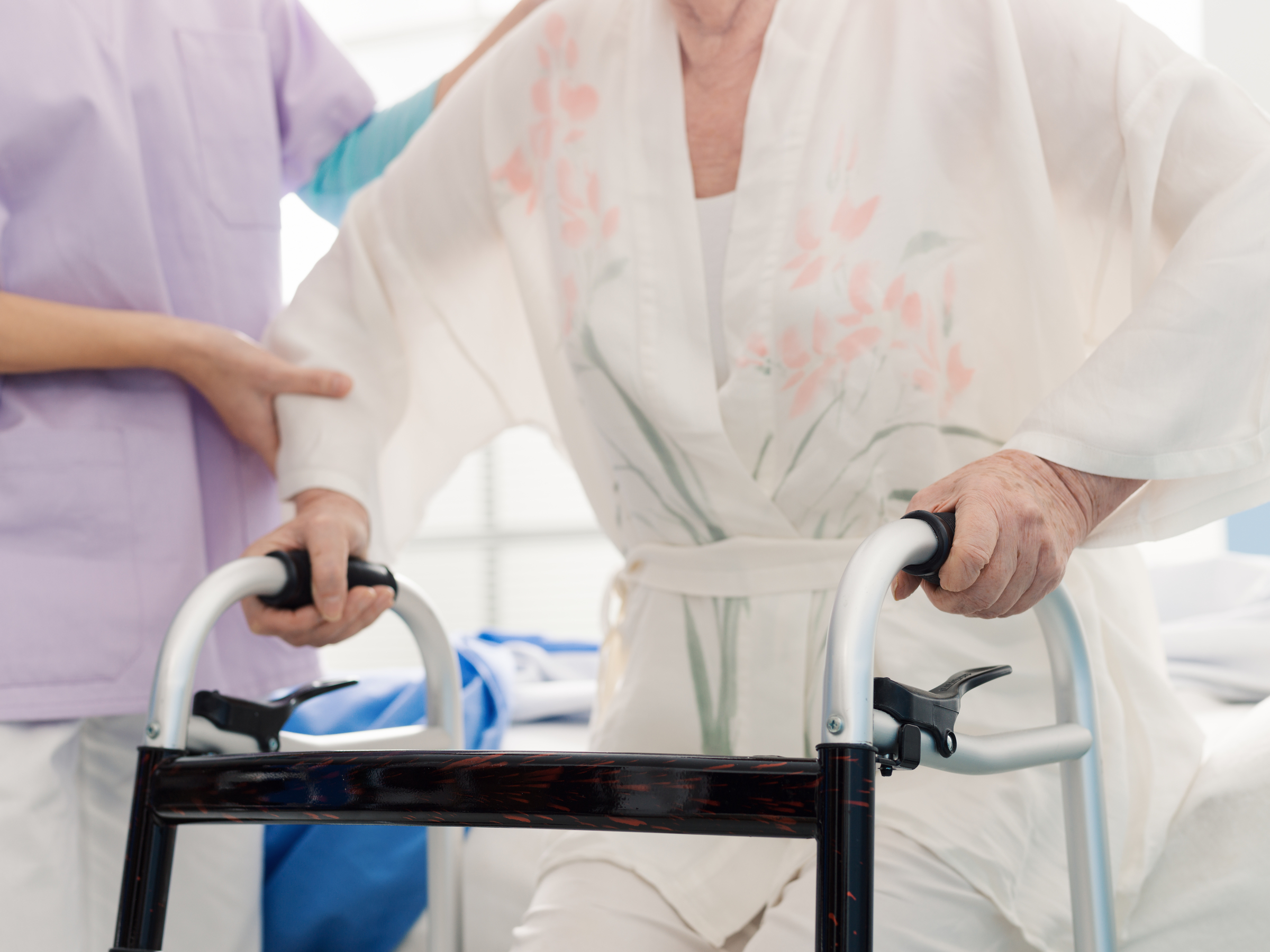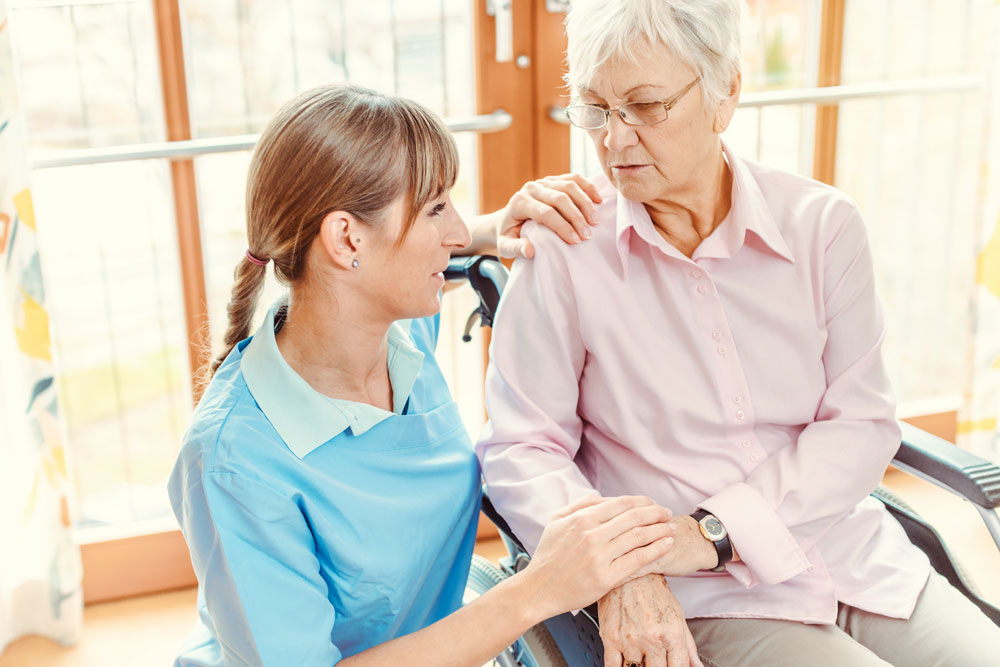By recurring training in transfer techniques, the risk of work injuries and care injuries is reduced.
This article is written from the perspective of Swedish conditions. Hopefully, it can inspire interested individuals from other countries.
There are several perspectives on transfer techniques. With exercises, technical aids and interaction with the individual, we can create good transfers for both the resident and the staff member. There are many lifting and transfer aids available today. Staff need good training in ergonomics, otherwise things can go wrong. Ergonomics is about how the workplace and work environment should be designed to avoid unnecessary strain on the body, such as working posture. At the same time, the risk of skin injuries or someone falling when using lifting aids must also be avoided.
 Foto: Mostphotos
Foto: MostphotosImportant Perspectives on Transfer Techniques
There are several perspectives that are important to consider when it comes to lifting and transfer techniques. There are many reasons to allocate time and resources for training in lifting and transfer techniques. First and foremost, it is for the convenience of the individual resident.
Being moved by someone who does not know how and does not have the right technique can be both uncomfortable and painful. It can also entail an increased risk of anxiety and irritation for the resident and in the worst case create an outwardly aggressive behaviour. In the transfer technique, there are also elements of treatment, eye contact, and communication that are very important for it to be done right. Describe what you are going to do so it feels safer for the person who is to be moved.
Safe Transfers
A large part of the fall accidents that occur in care arise in connection with transfers. Either when the resident moves on their own or when staff help the resident to move. There are also medical risks such as shear (i.e. the skin being subjected to strong friction), which can cause pressure injuries. It also happens that older people with fragile skeletons get fractures in connection with careless movements. In addition, there is the risk of staff injuring themselves during the transfer.
Lifting or transfer aids are often used. Serious medical injuries, even deaths, have occurred as a result of misused lifting slings. The Authority for Work Environment Knowledge has issued a research-based guide "Safe Person Transfers". It is important to remember that safe transfers are both a work environment responsibility and a patient safety responsibility. Both perspectives need to be included in risk analyses and implementation of changed working methods.
A very important aspect is the work environment. In addition to suffering and sick leave for nursing assistants, absenteeism means reduced continuity for the resident and deteriorated economy for the residence.
There are residences where transfer technique is a regularly recurring part of the operation. In these residences, time is also spent on training substitutes who come into the operation. In other residences, this does not seem to be a prioritized task. Perhaps the most important aspect is how the help is carried out. An incorrectly performed transfer can result in work injuries for the employee but perhaps even worse, discomfort or injuries for the resident.
Work with safe transfer technique is long-term. Risk analyses, inventory of when and how transfers occur, review of work injuries and incidents, and training efforts need to be ongoing. An instrument for inventorying transfers that the Authority for Work Environment Knowledge recommends is TilThermometer which is available in Swedish. Occupational therapists have good knowledge of how transfers should be done in a safe way and have a key role in the work with transfer technique. There are also companies that offer training in transfer technique.
Reflection Questions on Transfer Techniques
Care Personnel:
- What do you do to support each other in moving residents in the right way?
- How do you support colleagues when it comes to transfer technique?
- Do you try to help each other correct inappropriate or unhealthy work methods?
- Do you point out the need for training in transfer techniques?
Manager, Nurse, Occupational Therapist, and Physiotherapist:
- What do you do to ensure no one is injured in connection with lifts and transfers?
- Is transfer technique included in the introduction for all new employees?
- Do you have routines that mean no one can use a lifting aid without prior training?
- Is refresher training included annually for all employees?
Resident and Relatives:
- Do you feel that employees handle transfers in a safe way?
Erland Olsson
Specialist Nurse
Sofrosyne - Better care every day

Aktuellt i media
- 2025-12-03 04:00 06 Dokumentation
- 2025-12-01 04:00 02 Värdegrund
- 2025-11-27 04:00 13 Hygien
-
2025-11-24 04:00
03 Ledarskap
Leadership and Development - Future Elderly Homes, Development Work for Better Care
info Foto: Mostphotos
Foto: Mostphotos - 2025-11-20 04:00 15 Handlingsberedskap
- 2025-11-17 04:00 16 Sjukdom och död






